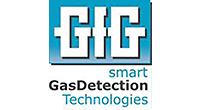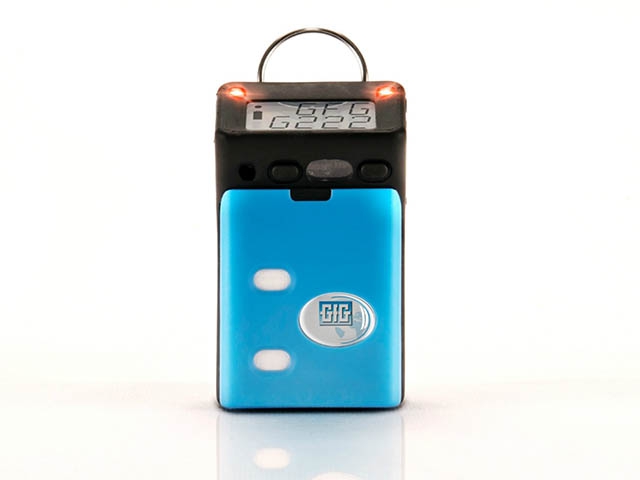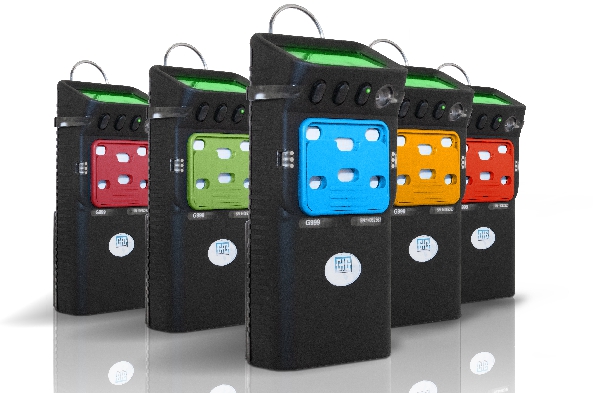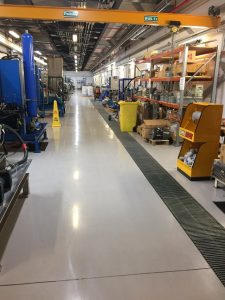- Contact 0870 350 7767
- |
- Advertise
Home > GfG Gas Detection UK Ltd > Why We Need To Measure Carbon Dioxide (CO2) For Personal Safety
Why We Need To Measure Carbon Dioxide (CO2) For Personal Safety
 News and PR from GfG Gas Detection UK Ltd - Published 12 May 2020
Carbon Dioxide is a gas we all breathe in, but it is also widely used in many industries in concentrated amounts. Carbon Dioxide in concentrations that are toxic can have severe effects.
News and PR from GfG Gas Detection UK Ltd - Published 12 May 2020
Carbon Dioxide is a gas we all breathe in, but it is also widely used in many industries in concentrated amounts. Carbon Dioxide in concentrations that are toxic can have severe effects.
What Is Carbon Dioxide?
Carbon Dioxide is a gas we all breathe in, but it is also widely used in many industries in concentrated amounts. The food industry uses CO2 for carbonated drinks, the oil industry uses it for Enhanced Oil Recovery (EOR) and chemical industries for a variety of reasons and in much higher concentrations. It can also be used for refrigeration, food processing or freezing, metalwork, cement production, fertilisers, aerosol manufacturing and breweries. In fact, in both its liquid gas and solid form, CO2 is used extensively in a multitude of industries and as such knowing a bit more about it, how it reacts with our environment and what it can do to us if we are exposed to it is important.
Effects of CO2
Carbon dioxide is colourless, and at low concentrations, the gas is odourless, but at higher concentrations, it has a sharp, acidic odour. It is heavier than air with a density of around 1.67 times that of air. The average content of CO2 in the air we breathe is approximately 0.041% depending on location. Carbon Dioxide in concentrations that are toxic, so between 1-8%, can have severe effects on the human body from drowsiness and dizziness, visual and hearing dysfunction and at the highest levels, suffocation.
What Are The Causes Of CO2 Related Incidents?
Poor ventilation is one of the main causes of excessive CO2 concentrations in enclosed spaces. Such is the nature of CO2 these spaces do not have to be small in size. They can be quite large, such as an indoor factory floor space. Because CO2 is heavier than air, in relatively high concentrations and without the dispersing effects of wind, CO2 can collect in sheltered/pocketed locations, especially around machinery where walkways and corridors may be quite narrow and have dead ends. This can be particularly prevalent in the production of carbonated soft drinks and soda water where multiple manufacturing stations are in use. For this reason, it is not only important to have the right gas detection equipment for sensing CO2, but also ensure that the placement of it is appropriate to the working environment.
CO2 In Its Solid State
In its solid state, carbon dioxide is commonly called dry ice and here is where another processing issue can occur. Some products, and not just food products, need to be transported from place to place using dry ice as a method of cooling, but when they are then put into a refrigeration unit where the temperature is usually above dry ices solid deposit threshold (−78.5 °C) the dry ice can effectively melt in the refrigeration unit hence returning to its CO2 gaseous state. If operators are working in these conditions in larger refrigeration units or portable refrigeration units, the presence of high levels of CO2 can be extremely dangerous and needs continuous monitoring. This is in addition to the monitoring of any refrigerant gases present that have the potential to leak.
How Can We Help?
Contact our team of experts [email protected]
Carbon Dioxide is a gas we all breathe in, but it is also widely used in many industries in concentrated amounts. The food industry uses CO2 for carbonated drinks, the oil industry uses it for Enhanced Oil Recovery (EOR) and chemical industries for a variety of reasons and in much higher concentrations. It can also be used for refrigeration, food processing or freezing, metalwork, cement production, fertilisers, aerosol manufacturing and breweries. In fact, in both its liquid gas and solid form, CO2 is used extensively in a multitude of industries and as such knowing a bit more about it, how it reacts with our environment and what it can do to us if we are exposed to it is important.
Effects of CO2
Carbon dioxide is colourless, and at low concentrations, the gas is odourless, but at higher concentrations, it has a sharp, acidic odour. It is heavier than air with a density of around 1.67 times that of air. The average content of CO2 in the air we breathe is approximately 0.041% depending on location. Carbon Dioxide in concentrations that are toxic, so between 1-8%, can have severe effects on the human body from drowsiness and dizziness, visual and hearing dysfunction and at the highest levels, suffocation.
What Are The Causes Of CO2 Related Incidents?
Poor ventilation is one of the main causes of excessive CO2 concentrations in enclosed spaces. Such is the nature of CO2 these spaces do not have to be small in size. They can be quite large, such as an indoor factory floor space. Because CO2 is heavier than air, in relatively high concentrations and without the dispersing effects of wind, CO2 can collect in sheltered/pocketed locations, especially around machinery where walkways and corridors may be quite narrow and have dead ends. This can be particularly prevalent in the production of carbonated soft drinks and soda water where multiple manufacturing stations are in use. For this reason, it is not only important to have the right gas detection equipment for sensing CO2, but also ensure that the placement of it is appropriate to the working environment.
CO2 In Its Solid State
In its solid state, carbon dioxide is commonly called dry ice and here is where another processing issue can occur. Some products, and not just food products, need to be transported from place to place using dry ice as a method of cooling, but when they are then put into a refrigeration unit where the temperature is usually above dry ices solid deposit threshold (−78.5 °C) the dry ice can effectively melt in the refrigeration unit hence returning to its CO2 gaseous state. If operators are working in these conditions in larger refrigeration units or portable refrigeration units, the presence of high levels of CO2 can be extremely dangerous and needs continuous monitoring. This is in addition to the monitoring of any refrigerant gases present that have the potential to leak.
How Can We Help?
Contact our team of experts [email protected]

 Why We Need To Measure Carbon Dioxide (CO2) For Personal Safety
Why We Need To Measure Carbon Dioxide (CO2) For Personal Safety

Other announcements from GfG Gas Detection UK Ltd
-
Technical specifications: Micro 5
Take a look at the technical specifications for our new: Micro 5
22 Mar 2024
-
G999 7 Gas Multi Detector
The G999 is a small, light, rugged gas detector with a wireless module and integrated suction pump. 5 sensor slots allow you to detect 7 gases simultaneously warning users of hazards
12 May 2020
-
GFG Partner With Moog Aircraft To Create A Safer Working Environment
Gases are used in the manufacturing process of Moog components, so it was necessary to look at equipment that could protect Moog employees at the workface as well as monitor areas for gases
12 May 2020
-
Bump Testing
This article follows on from the work of the BSIF Special Interest Group formed to look at detection, measurement and monitoring instrumentation...
03 Jan 2019






